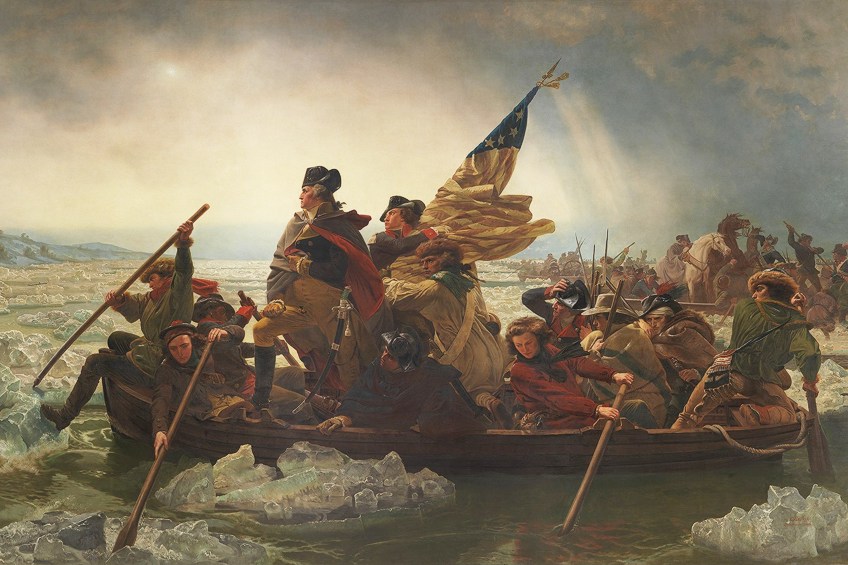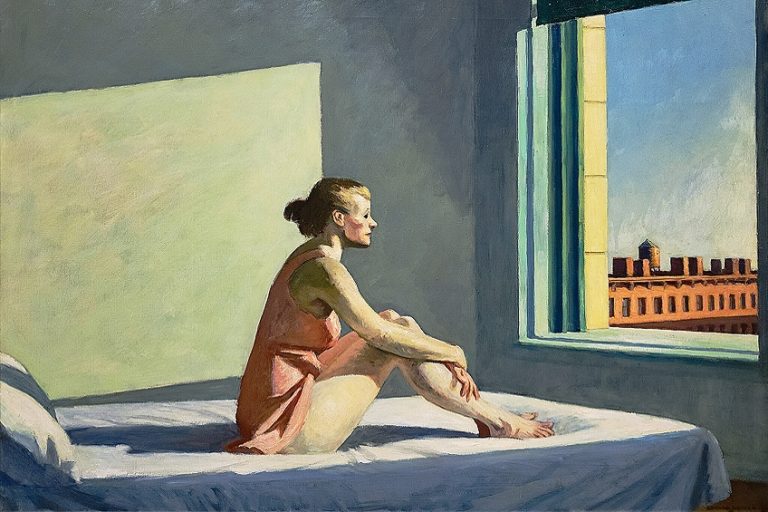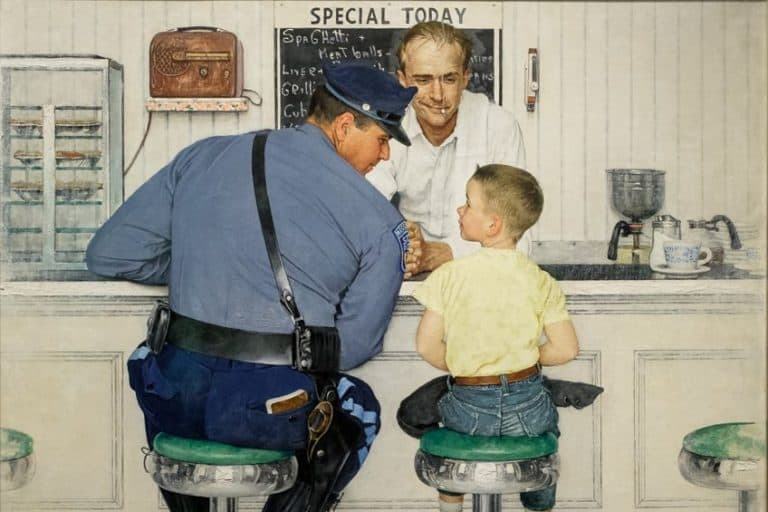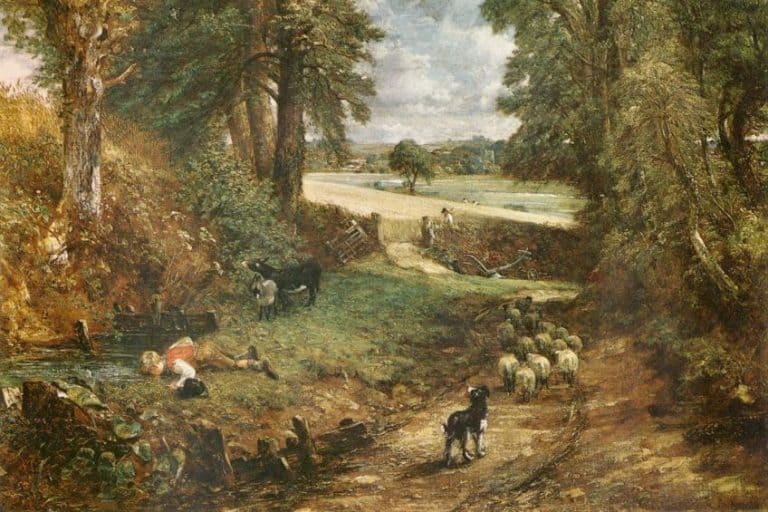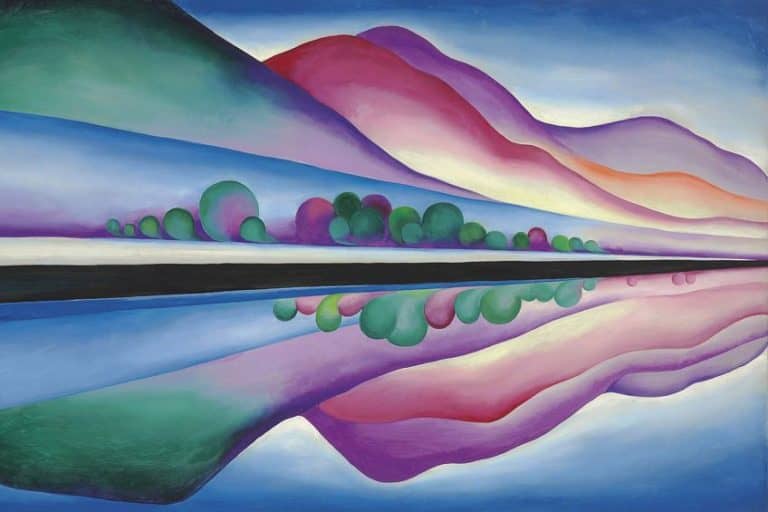“Washington Crossing the Delaware” by Emanuel Leutze – A Study
During the American War of Independence, Christmas night of 1776 was a monumental undertaking for George Washington and his troops who crossed the Delaware River to siege the Hessians. This article will discuss Emanuel Leutze’s painting about this event, titled Washington Crossing the Delaware (1851).
Artist Abstract: Who Was Emanuel Leutze?
Emanuel Gottlieb Leutze was born on May 24 1816 and died on July 18, 1868; he was born in Germany in the city called Schwäbisch Gmünd. He immigrated to the United States with his family around nine years old; he grew up in Philadelphia. He was involved in art from a young age, drawing and painting in particular. He studied at the Kunstakademie Düsseldorf from 1841 to 1843. He lived in Düsseldorf after he traveled in Germany and Italy for a couple of years. He also supported various American artists and was a famous History painter of his time, depicting American themes and figures.
Leutze’s paintings are characterized by the American Romanticism art style, and he was also known to paint portraits.

Washington Crossing the Delaware (1851) by Emanuel Leutze in Context
Washington Crossing the Delaware by Emanuel Leutze has become an emblem of American history and victory over colonial forces. Below we will discuss this painting further providing a brief socio-historical overview of the historical events and exploring questions like: “When did George Washington cross the Delaware River?” and “Where did George Washington cross the Delaware River?”
We will also explore more about Emanuel Leutze’s life when he created the “Washington Crossing the Delaware” painting and what inspired him.
Importantly there is more than one version of this painting, some sources refer to two versions, which are in existence today, and other sources refer to three, which include the original version that was destroyed. We will also provide a formal analysis, looking more closely at Emanuel Leutze’s artistic style, which we will outline utilizing the seven art elements, namely, color, value, texture, line, shape, form, and space.
| Artist | Emanuel Gottlieb Leutze |
| Date Painted | 1851 |
| Medium | Oil on canvas |
| Genre | History painting |
| Period / Movement | American Romanticism |
| Dimensions (cm) | 378.5 x 647.7 |
| Series / Versions | There are two (existing) versions, although, some sources indicate three, which includes the original that was destroyed. |
| Where Is It Housed? | The Metropolitan Museum of Art, New York City, United States |
| What It Is Worth | Bought by Marshall O. Roberts between 1851 to 1853 for $10,000 |
Contextual Analysis: A Brief Socio-Historical Overview
The American War of Independence officially started in April 1775 with what is termed the “first shots of war”. There are numerous reasons and catalysts that started this war, which we will not expand upon in this article. However, within this larger scope of events was the Battle of Trenton, which took place on the morning of December 26th in 1776; Trenton is the capital city of the state of New Jersey, and the latter is bordered by the other states of New York and Pennsylvania.
The Battle of Trenton was led by George Washington. He was the Commander in Chief of the Continental Army, the latter of which besieged the German soldiers known as the Hessians who were stationed at Trenton.
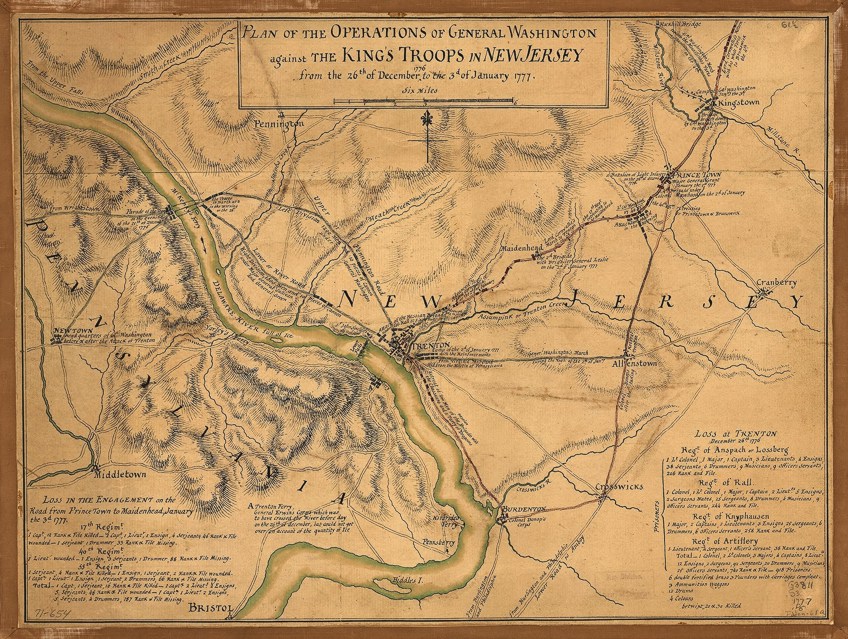
George Washington strategized and planned to cross the Delaware River, reportedly nearby McConkey’s Ferry Inn, on the night of December 25. The attack was planned from different sides of Trenton with Washington and his men “nine miles North of Trenton” and others attacking from Pennsylvania. The ambush of the Hessians proved successful and gave Washington and his troops a victory among several prior defeats like the Battle of Long Island in New York, the latter of which caused Washington and his men to retreat to Pennsylvania.
It is important to set the stage, so to say, for this event; crossing the Delaware River was no easy feat because it was during Winter and the river succumbed to ice and a merciless storm.
The men were reportedly running low on provisions like food and had to equally fight the cold while fighting for their independence. Furthermore, some of the troops could not cross the river, except for Washington and his men, which reportedly left 2,400 men to fight. There have also been debates about what boats the men utilized to cross the river; some say Washington and the men were on Durham boats and that ferries were utilized to transport horses and artillery.

The Versions of Washington Crossing the Delaware Painting
Emanuel Leutze created the original Washington Crossing the Delaware painting when he lived in Germany, which was during 1849. He finished the painting in 1850. However that first version was damaged by a fire that broke out in Leutze’s studio in November 1850, and sadly it was then destroyed several years later, in September 1942, during World War II, by another fire from a bombing raid.
It is believed that Leutze started on a new version in 1850 after the fire that broke out in his studio.
In 1851 it was exhibited in New York until it was bought by Marshall O. Roberts, possibly in 1852, for $10,000. In 1897 John Stewart Kennedy donated it to the Metropolitan Museum of Art. This could be considered Leutze’s second version.
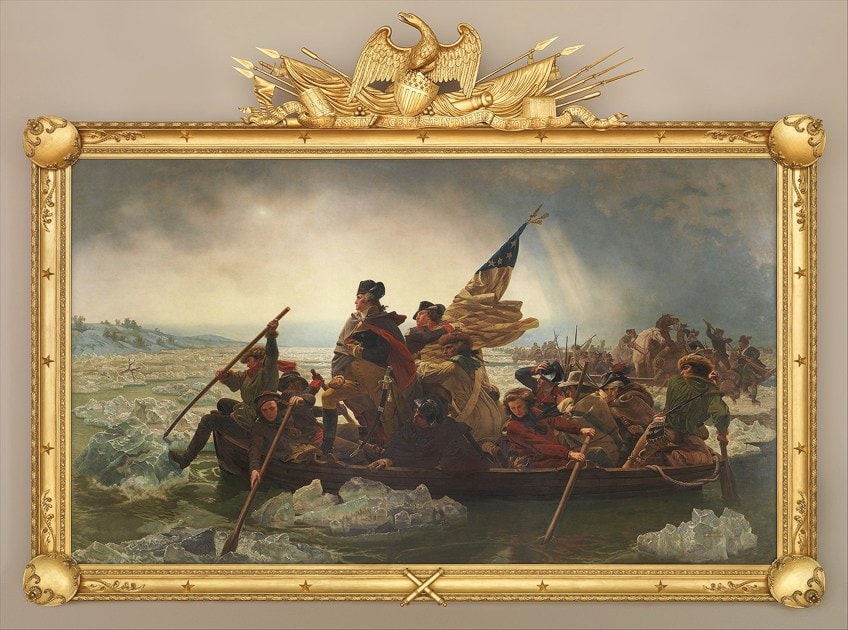
The third version is smaller in size and was possibly created when Leutze worked on his second version. It was exhibited at the White House in Washington D.C., the United States reportedly from 1979 to around 2014 when it was bought by the couple Bob Kierlin and Mary Burrichter. It was on display at the Minnesota Marine Art Museum for several years until recently when the couple decided to sell it; the estimated price is $15 to $20 million.
As some news sources have explained, the couple decided to “pull” several of the artworks that they loaned to the Minnesota Marine Art Museum due to a decline in financial gain and visitors to the museum.
What Inspired the Washington Crossing the Delaware Painting?
It might seem out of place that Emanuel Leutze focused on such a strong American and often-described “patriotic” theme in the Washington Crossing the Delaware painting while he lived in Germany. Reportedly, Leutze was motivated by the socio-political events from the 1848 Revolutions in Europe.
Thus, Washington and the men in the boat were symbols of strength, bravery, heroism, and leadership rather than representations of historically accurate facts.
Formal Analysis: A Brief Compositional Overview
Leutze reportedly changed several compositional aspects in the Washington Crossing the Delaware painting to enhance its patriotic value and dramatism, which we will discuss further in the visual description below.
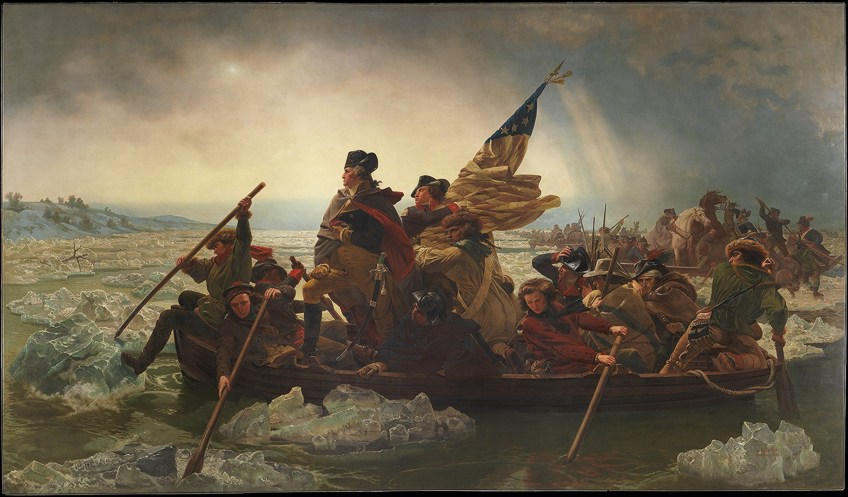
Visual Description: Subject Matter
In Washington Crossing the Delaware by Emanuel Leutze, we see the central and dignified figure of George Washington standing at the boat’s bow (the front end of a boat); his right leg is lifted with his foot propped on what appears to be the wooden seat in the boat. He is looking to the left of the composition, his gaze fixed on his target ahead of him.
Here, George Washington crosses the Delaware seemingly fearlessly.
He is holding a telescope in his right hand, which rests on the thigh of his bent leg, and his left arm is bent with his hand holding onto his coat. On his left hip is a sheathed saber. He is officially uniformed, wearing the tricorne hat, a cape with an inner red lining and uniform underneath, black boots, and gloves that appear to match the color of his uniform.
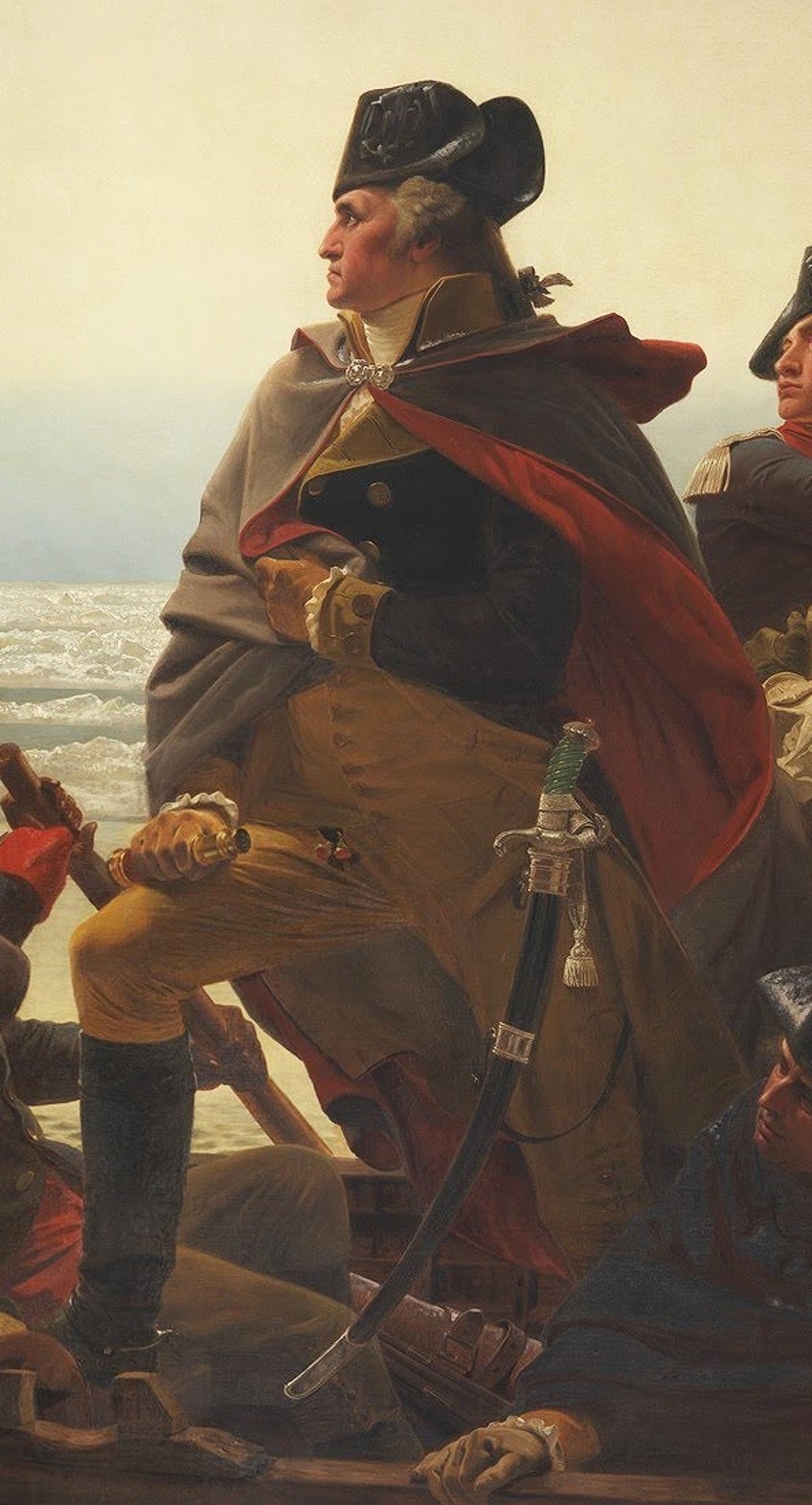
Standing just behind Washington, with resolute yet seemingly apprehensive facial expressions, are two figures holding a large flag composed of red and white stripes and white stars that appear to be in a circle on a blue background.
This is a reference to the American flag, also referred to as “Stars and Stripes”, which was only designed and used in 1777.

There are 11 men in the boat with George Washington – some are seated and standing while rowing or engaged in their surroundings, and others appear to be sitting contemplatively still. There is liveliness all around the central figure, who appears calm and resolute in contrast. To the right of the composition are more boats with men, horses, and canons, receding far into the background, all moving towards the left of the landscape.
The landscape itself is an icy stretch of the Delaware River, which is covered in large pieces of ice, revealing parts of the water between it.
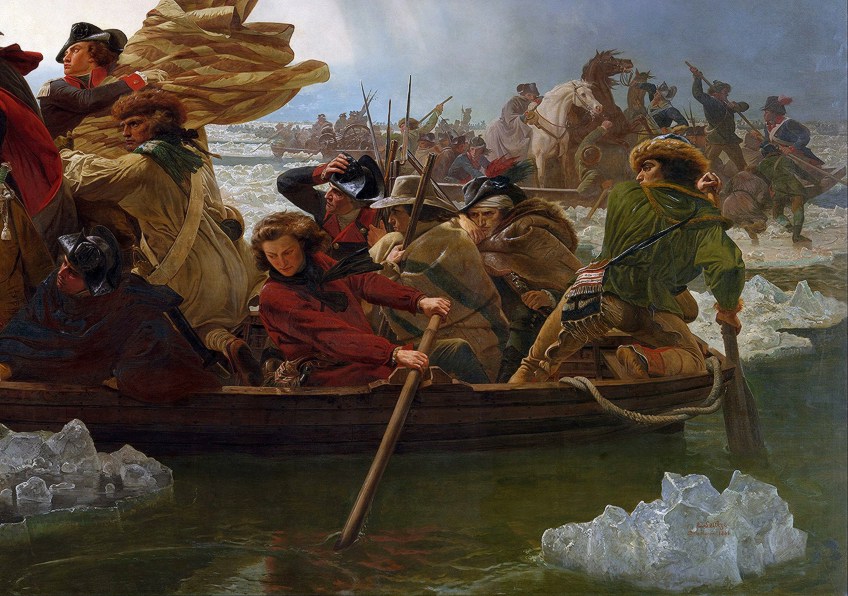
To the left edge of the composition, there is a trace of land, what appears to be an embankment with several trees and foliage amidst the blanket of white snow. The sky appears thick with clouds and is darker on the right-hand side of the composition. However, as we move to the left side of the sky, there are slivers of sunlight piercing through the thickness.
Additionally, the left side is also lighter, suggesting the morning sunrise, which is further emphasized by the glimmering morning star perched on the upper left corner of the sky.

Many art sources about the Washington Crossing the Delaware painting mention Leutze’s “artistic license” when he created it, which was undoubtedly to express more emotive qualities; George Washington crosses the Delaware with poise and honor.
Examples include the depiction of the event during the morning when, in fact, it took place during the dark of the night.
Additionally, the ice would have reportedly been sheets of ice and not large pieces, the boats would have been larger, and Washington would not have stood in the boat as we see in the painting. This includes the above-mentioned flag, which was only created after these events took place.
Color
The overall color scheme in Washington Crossing the Delaware by Emanuel Leutze is quite dark, with hues like deep greens, reds, blues, browns, and blacks. The lightness of the sky and the ice on the water’s surface create a color contrast between it and the darker colors formed by the band of boats and men along the middleground of the composition.
The primary source of light comes from the sunrise, which serves as a highlighting effect to emphasize the central figure of Washington and the men, noticeable on their faces and the glimmer of the artillery in the background.
Additionally, we also see Leutze’s application of dark areas to the right of the composition.

Texture
We will notice Emanuel Leutze’s use of different brushstrokes to convey texture. For example, smoother brushstrokes for the men’s clothing, the wooden oars, the sky, as well as the water, which is contrasted with shorter and thicker (sometimes described as “choppy”) brushstrokes for the pieces of ice on the water’s surface.
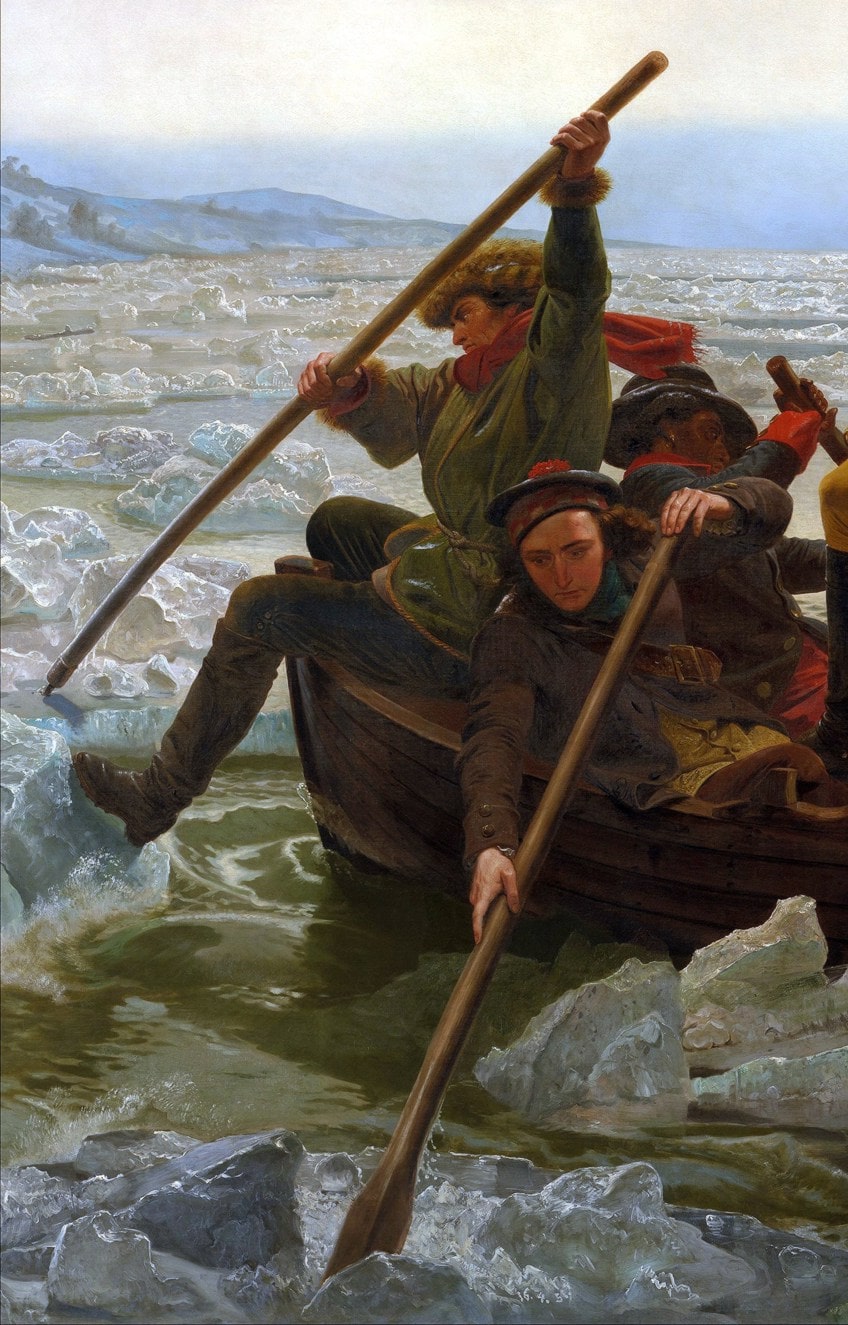
Line
There is an interplay of various types of lines in the Washington Crossing the Delaware painting, which convey a sense of motion in terms of the direction the men are moving, but also emphasis in terms of strength and bravery. For example, horizontal lines are created by Washington’s boat that fills up the foreground as well as the arrangement of ice on the water further into the distance, but we see the more vertical upright figure of Washington in the boat, which creates emphasis and the idea of leadership and bravery.
Another vertical line is created by the receding boats in the background of the composition, which conveys three-dimensionality and depth. Diagonal lines are created by the long oars in the foreground, which extend into the water as well as the flag’s pole, which extends upwards, creating a contrast.

Shape and Form
The compositional form of the Washington Crossing the Delaware painting is reportedly in a triangular layout. It starts on the horizontal base from the boat moving upwards: from the left, our gaze is directed by the oar, and from the right, our gaze is directed by the rays of sunlight and the soldier at the end of the boat.
The top of the triangle or “apex” is created by the top of the flag’s pole.
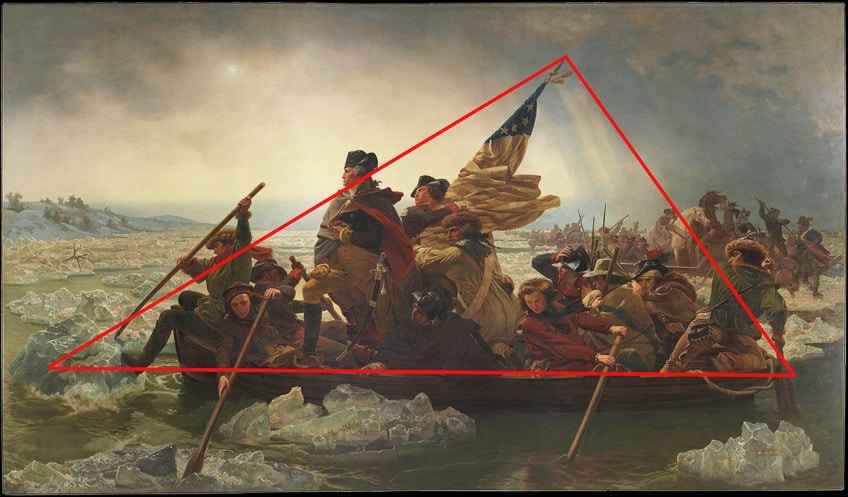
Space
Emanuel Leutze utilized atmospheric perspective to create the illusion of a three-dimensional space, which is conveyed by creating smaller, less recognizable figures in the background, which become larger and more in focus towards the foreground.

Washington Crossing Countries
While there have been numerous other artistic portrayals of George Washington crossing the precarious Delaware River, Washington Crossing the Delaware by Emanuel Leutze is a symbol of hope that finds its place across the board, so to say, in the United States and Europe.
Furthermore, this monumental painting is from the heart of someone who found his identity rooted not only in Germany but also in America. We find that Leutze’s rendering of George Washington has him crossing countries as a statement of strength and a reminder of the patriotic past.
Take a look at our Washington Crossing the Delaware painting webstory here!
Frequently Asked Questions
Who Painted Washington Crossing the Delaware Painting?
The German-born painter Emanuel Leutze painted Washington Crossing the Delaware in 1851. However, this oil on canvas was his second version, as the original version was destroyed in an air bomb raid in 1942.
When Did George Washington Cross the Delaware?
George Washington crossed the Delaware River in the early evening of December 25, 1776, as a planned attack on the Hessians, German soldiers, who were based at Trenton in New Jersey, the United States.
Where Did George Washington Cross the Delaware?
George Washington was believed to have crossed the Delaware River from nearby McConkey’s Ferry Inn; he was north of Trenton. However, there is debate among scholars about the exact location of Washington’s crossing.
Alicia du Plessis is a multidisciplinary writer. She completed her Bachelor of Arts degree, majoring in Art History and Classical Civilization, as well as two Honors, namely, in Art History and Education and Development, at the University of KwaZulu-Natal, South Africa. For her main Honors project in Art History, she explored perceptions of the San Bushmen’s identity and the concept of the “Other”. She has also looked at the use of photography in art and how it has been used to portray people’s lives.
Alicia’s other areas of interest in Art History include the process of writing about Art History and how to analyze paintings. Some of her favorite art movements include Impressionism and German Expressionism. She is yet to complete her Masters in Art History (she would like to do this abroad in Europe) having given it some time to first develop more professional experience with the interest to one day lecture it too.
Alicia has been working for artincontext.com since 2021 as an author and art history expert. She has specialized in painting analysis and is covering most of our painting analysis.
Learn more about Alicia du Plessis and the Art in Context Team.
Cite this Article
Alicia, du Plessis, ““Washington Crossing the Delaware” by Emanuel Leutze – A Study.” Art in Context. August 12, 2022. URL: https://artincontext.org/washington-crossing-the-delaware-by-emanuel-leutze/
du Plessis, A. (2022, 12 August). “Washington Crossing the Delaware” by Emanuel Leutze – A Study. Art in Context. https://artincontext.org/washington-crossing-the-delaware-by-emanuel-leutze/
du Plessis, Alicia. ““Washington Crossing the Delaware” by Emanuel Leutze – A Study.” Art in Context, August 12, 2022. https://artincontext.org/washington-crossing-the-delaware-by-emanuel-leutze/.


